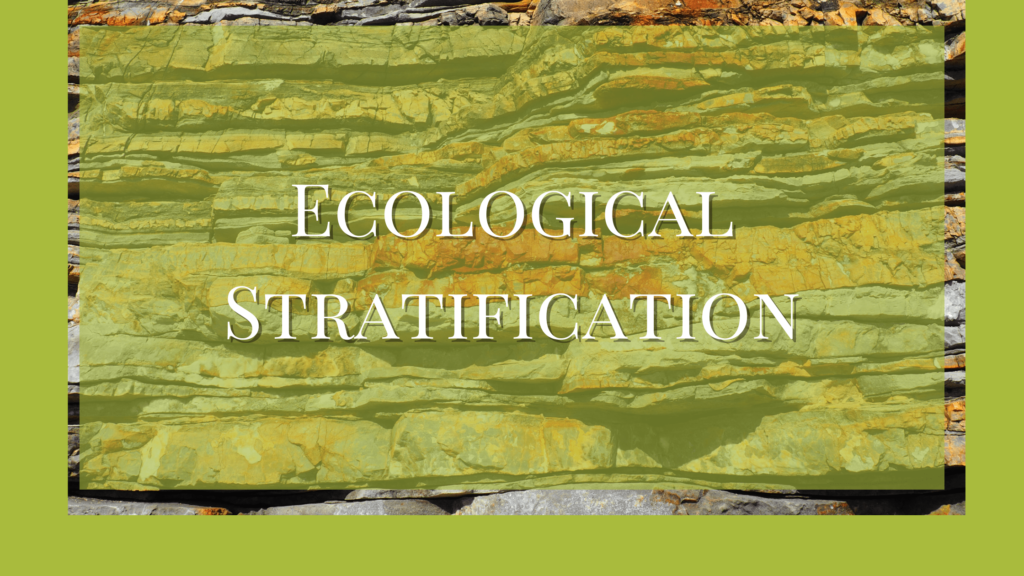Ecological stratification is the vertical layering of the vegetation in a community. This vertical stratification divides the different types of vegetation into different layers according to their height. The arrangement can be seen as tall trees, shrubs, herbs, mosses, lichens, etc.
Ecological Stratification in Different Habitats
Due to stratification, vegetation in the upper layer such as tall trees receive more sunlight than shorter plants. The trees that grow denser prevent the penetration of light to the lower layers. This results in reduced photosynthesis and growth in the lower layers. Gradually, those plants get accustomed to the lower light intensity and optimize their growth requirements.
Ecological stratification is seen in the underground layers such as roots, rhizomes, etc. Here the root system of different plants takes water and nutrients from separate layers or depths of soil. This will help reduce competition and over-exploitation of nutrients at a specific layer of soil.
Ecological Stratification in Aquatic Ecosystem
Stratification in aquatic systems is according to the temperature, light penetration, and oxygen availability, at different depths. For example, the upper light zone will have more phytoplanktons where maximum photosynthesis occurs while the lowest level will have more decomposers.
The layer of water bodies that receive maximum sunlight is called the epilimnion. The shallow water that receives less light but reaches the waterbed is called the littoral zone. Rooted plants and floating plants are common in this zone.
The open water where plankton are plenty and photosynthesis happens in significant amounts is called the limnetic zone. Since the deeper layers will have less light, there will be minimal photosynthesis. This zone is called the compensation level.
The deeper zone of the water body where there is no light penetration is the profundal zone where the organisms depend on the organic matter for their energy needs. This zone is divided into three.
- Metalimnion where the temperature and light penetration drop and has no photosynthesis.
- Hypolimnion is a cold zone with dense water and low dissolved oxygen. Decomposers are seen in this zone.
- The benthic zone is the deepest zone and the bottommost of the water body with no biological activity. Here the microbes survive through anaerobic respiration.
Forest Stratification
In forest stratification, taller trees make the canopy while shorter trees occupy the understory layer. Then comes the small trees and shrubs followed by herbs and ground-level plants. This separation of plants according to their height is known as vertical stratification.
Here, the canopy trees are the primary sites of energy conversion. They also affect how the sunlight reaches the lower levels. The smaller trees and shrubs are more adapted to less sunlight or will become shade-loving plants. The direction of light influences their location of growth.
The herbs and smaller plants depend on the humidity of the soil and are more adapted to shade than other taller plants.
Thus ecological stratification helps with the distribution of plants according to various parameters. This stratification helps them get their essential materials for survival with minimal competition and optimal coexistence. It is seen in all types of ecosystem and plays an important role in their maintenance and survival.
References
- Shukla, R.S. and Chandel, P.S. (2001) Plant Ecology. S. Chand and Company Ltd., New Delhi.
- Verma, P.S., Agarwal, V.K. (1999). Cell biology genetics molecular biology evolution and ecology. New Delhi: S.Chand Co.(Pvt) Ltd.
- Carter, J. S. (n.d.). Stratification and Ecotones. https://biologyclermont.info/wwwroot/courses/eco/lec%20ecotones.htm




